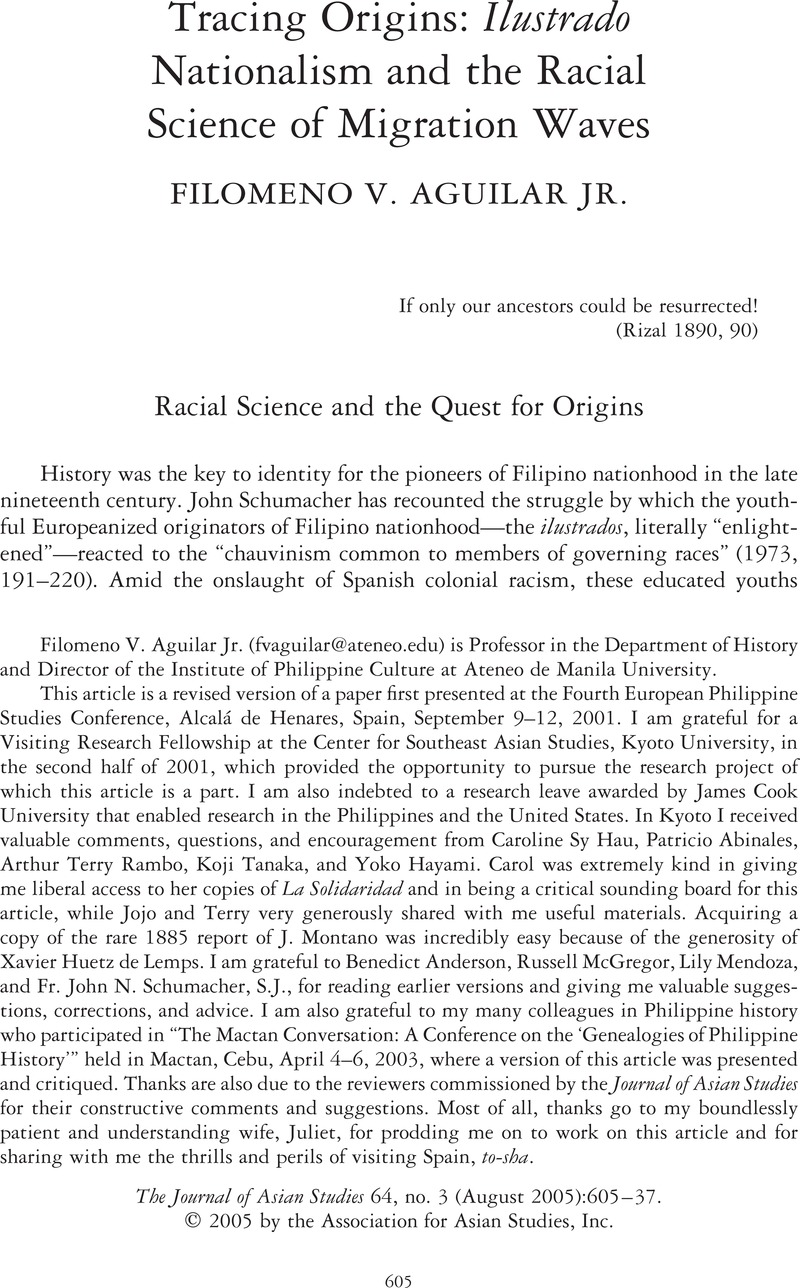Crossref Citations
This article has been cited by the following publications. This list is generated based on data provided by Crossref.
2005.
The Promise of the Foreign.
p.
36.
2005.
The Promise of the Foreign.
p.
213.
2005.
The Promise of the Foreign.
p.
96.
2005.
The Promise of the Foreign.
p.
119.
2005.
The Promise of the Foreign.
p.
183.
2005.
The Promise of the Foreign.
p.
191.
2005.
The Promise of the Foreign.
p.
66.
2005.
The Promise of the Foreign.
p.
1.
2005.
The Promise of the Foreign.
p.
132.
2005.
The Promise of the Foreign.
p.
17.
2005.
The Promise of the Foreign.
p.
159.
Benedicto, Bobby
2009.
Shared Spaces of Transnational Transit: Filipino Gay Tourists, Labour Migrants, and the Borders of Class Difference.
Asian Studies Review,
Vol. 33,
Issue. 3,
p.
289.
Aguilar, Filomeno V.
2010.
The Riddle of the Alien-Citizen: Filipino Migrants as US Nationals and the Anomalies of Citizenship, 1900s–1930s.
Asian and Pacific Migration Journal,
Vol. 19,
Issue. 2,
p.
203.
Ong, Jonathan Corpus
and
Cabañes, Jason
2011.
Engaged, But Not Immersed: Tracking the Mediated Public Connection of Filipino Elite Migrants in London.
South East Asia Research,
Vol. 19,
Issue. 2,
p.
197.
Cabanes, Jason Vincent Aquino
2014.
Multicultural mediations, developing world realities: Indians, Koreans and Manila’s entertainment media.
Media, Culture & Society,
Vol. 36,
Issue. 5,
p.
628.
Honma, Todd
2015.
Reinventing the Tribal.
Amerasia Journal,
Vol. 41,
Issue. 3,
p.
40.
Acabado, Stephen
2017.
The Archaeology of Pericolonialism: Responses of the “Unconquered” to Spanish Conquest and Colonialism in Ifugao, Philippines.
International Journal of Historical Archaeology,
Vol. 21,
Issue. 1,
p.
1.
Paredes, Oona
2017.
Projecting order in the pericolonial Philippines: An anthropology of Catholicism beyond Catholics.
The Australian Journal of Anthropology,
Vol. 28,
Issue. 2,
p.
225.
CONRAD, SEBASTIAN
2018.
“NOTHING IS THE WAY IT SHOULD BE”: GLOBAL TRANSFORMATIONS OF THE TIME REGIME IN THE NINETEENTH CENTURY.
Modern Intellectual History,
Vol. 15,
Issue. 3,
p.
821.
2018.
Gobernar colonias, administrar almas.
p.
307.





